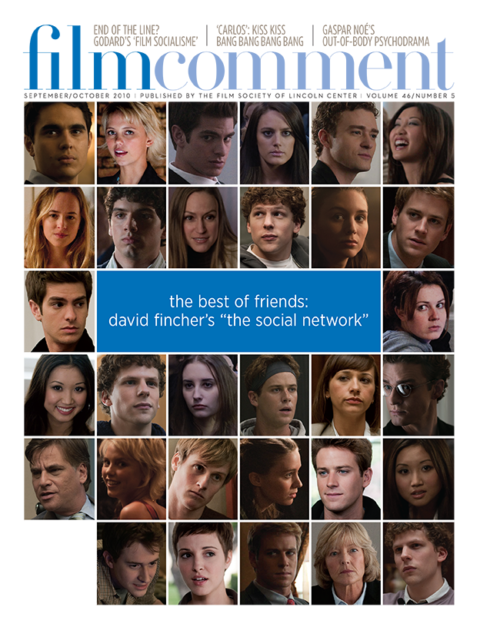
World War II and film history intersect with shadow-casting monumentality—in the use of film as a record of war and evidence of Nazi atrocities, in the crowded choir of personal and public accounts across hundreds of theatrical and broadcast documentaries, in the specific inquisitions of Marcel Ophüls and the massive war-movie output of Hollywood among others. Horrific images of rolling tanks and heaps of bodies rolling into pits are so familiar to many Westerners that reckoning requires a special effort, an unusually active engagement, a thinking-through of yet another encounter with this past.
Against this context of so much context, the restored Nuremberg—the U.S.-organized account of the 1945–46 war-crimes trials—is a ritual as much as it is a movie. Split between footage of the trials and a retelling of the rise of the Nazis, it was originally intended as Allied propaganda for German audiences, featuring a dutifully clear message and dour drumbeat pacing. The project was commissioned by doc god (and Lt. Col.) Pare Lorentz and at one time belonged to John Ford as a project, but was ultimately put together by Stuart Schulberg, who had been tasked with producing other such material as the U.S. strategized in the aftermath of the Allied victory. (As tidy and self-evident as such films seem now, they were not always well received: one reported German response went “If you spent more time bringing in food and less time making propaganda, we’d all be better off.”) Stuart’s daughter, multihyphenate Sandra Schulberg, previously curated a program of Marshall Plan commissions which played in the 2004 New York Film Festival, and, with Josh Waletzky, is credited for the audio-augmented, freshly subtitled restoration here.
The thrust of Nuremberg mirrors the two-step of the visuals (and of the 11-month-long trials): indelibly linking historical acts to individual responsibility. The courtroom profiles of Nazi top brass from Air Marshall Göring on down punctuate the collapsing skeletons of buildings, the endless huddles of deceived diplomats or crumpled civilians, or simply the official written directives read aloud in voiceover. Some footage that appears in the film, which drew on two previous Army compilations, was presented in the trial itself. Nuremberg builds its case slowly with what’s now a textbook recapitulation of Hitler’s ascendancy. Nevertheless, the chronicle’s beats (Reichstag fire, Sudetenland, Axis pact, etc.) still induce feelings of dread, grief, powerlessness, and loathing. (“Jawohl!” affirms Göring about Nazi strategies, but otherwise his grandstanding is largely kept off-screen.)

One of the film’s surprises might be the time devoted to demonstrating the militarism and duplicity of the Third Reich. Nuremberg builds a litany of reneged promises, recounting acts of aggression together with Hitler’s specific assurances to the contrary, as if to counter any possible national nostalgia. Organized by the quantifying-the-unquantifiable rubrics of the official charges—e.g., “Crimes Against Humanity”—the climactic item is the mass murder of the Jews, which receives less screen time than one might expect, though this footage was presented early on at the trial. And you almost long for more shots of courtroom spectators if only to provide some relief from the relentless focus on the prosecutors and defendants—this is clearly a film whose communal theatrical experience will be qualitatively different than home viewing.
The greatest theater in this “courtroom drama” might come with chief prosecutor among the multinational team, Robert H. Jackson, and his immortal closing arguments, ridiculing the shuffling denials from the front bench: “These men saw no evil, spoke none, and none was uttered in their presence.” Nuremberg is a film that satisfies and yet at the same time, like so many such records, leaves a yawning gulf between what is chronicled and what occurred.








